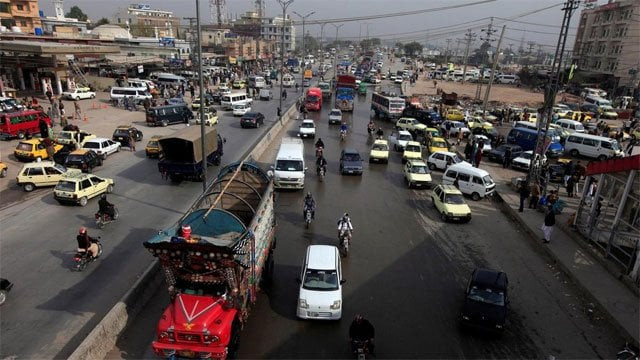PML-N targets 6.7% growth rate in 12th Five Year Plan
Will also look to bring down public debt to below 60% of GDP by 2023

Will also look to bring down public debt to below 60% of GDP by 2023. PHOTO: REUTERS
The 2018-2023 Five Year Plan also targets to double Pakistan’s exports to $48 billion and increase the foreign direct investment to $7.6 billion. Headed by Prime Minister Shahid Khaqan Abbasi, the NEC - the constitutional body having the mandate to advise provinces and the centre on macroeconomic framework - approved the draft of 12th Five Year Plan 2018-23. By the time the NEC approved the Five Year Plan, chief ministers of Sindh, Balochistan and Khyber-Paktunkwha had staged a walkout from the meeting.
Budget 2018-19: What bold steps should you expect to see this year
However, the NEC also approved the Annual Plan 2018-19 in presence of representatives of all the federating units. The Annual Plan was first on the agenda item and the 12th Five Year plan was the last item.
Five Year Plan
One of the main objectives of the 12th Plan is to improve the economic growth and achieve an average growth rate of 6.7%. This growth rate is targeted to be achieved by strong contribution from industry and services while the agriculture average output is estimated at only 4%.
However, in order to achieve this growth rate, the next government would have to increase the investment-to-GDP ratio to almost 20% from the current 16.4%, according to the Planning Commission.
The plan promises creating fiscal space by reducing public debt through mobilisation of resources, broadening the tax base and curtailing current expenditures.
The government has forecasted that the growth in the money supply will be 15% by 2022-23 with projected inflation of around 7% during the plan period. The tax-to-GDP ratio has been targeted to increase to only 15%. The budget deficit has been targeted to be brought down to 4% from 5.5% of GDP. The public debt-to-GDP ratio would be brought down to 60% by 2023 from the current level of 70.1% of GDP.
The total investment-to-GDP ratio is projected to grow to 19.6% from current 16.4%. Fixed investment is targeted at 18%. National savings are projected to grow to 19.3% of GDP.
However, there seems that the Plan has been prepared without much thought as the current account deficit is targeted at only 0.3% of GDP by 2022-23.
A budget without Dar, a PML-N without Nawaz
Annual Plan
The Annual Plan envisages overall macroeconomic stability in view of encouraging agriculture performance and steady industrial growth.
The NEC approved 6.2% economic growth rate and 6% inflation targets for the next fiscal year 2018-19. The target is slightly higher than the provisional economic growth rate of 5.8% for the outgoing fiscal year.
However, the 6.2% target is optimistic, as there are apprehensions that in the next fiscal year Pakistan’s economy could slow down due to problems on the external sector front. The Asian Development Bank (ADB) stated that Pakistan’s economy will slow down to 5.1% in fiscal year 2018-19 while the International Monetary Fund (IMF) has projected 4.7% growth rate for the next fiscal year.
The government is aiming at 3.8% growth in the agriculture sector for the next year, which is slightly better than the rate for the outgoing fiscal year. The industrial sector is projected to grow by 7.6%, better than outgoing fiscal year’s rate of 5.8%. The services sector is projected to grow by 6.5% against the outgoing year’s growth rate of 6.4%. The investment-to-GDP target is approved at 17.2% for the next fiscal year, as against this year’s projected rate of 16.4%. The national savings-to-GDP target is approved at 13.4% as against 12.1% in the outgoing fiscal year.
The planning ministry presented the current account deficit target at 3.8% of GDP for the next fiscal year to the NEC. But it was decided that the target will be aligned with the Budget Strategy Paper target of 4.1%. This means that next year’s current account deficit in absolute terms will be $13.4 billion now.
The ADB has projected 4.5% current account deficit in the next fiscal year, suggesting that the country’s external account will remain under pressure for yet another year.
The export target has been set at $27.3 billion, up $2.8 billion or 11.5% compared to the revised estimate for the outgoing fiscal year. Imports have been projected to grow to $56.5 billion, up only $3.4 billion or 6.3%.
As a result, the government expects to keep the trade deficit restricted at $29.2 billion in the new fiscal year, which will be higher by only 2%.
Published in The Express Tribune, April 25th, 2018.
Like Business on Facebook, follow @TribuneBiz on Twitter to stay informed and join in the conversation.



















COMMENTS
Comments are moderated and generally will be posted if they are on-topic and not abusive.
For more information, please see our Comments FAQ